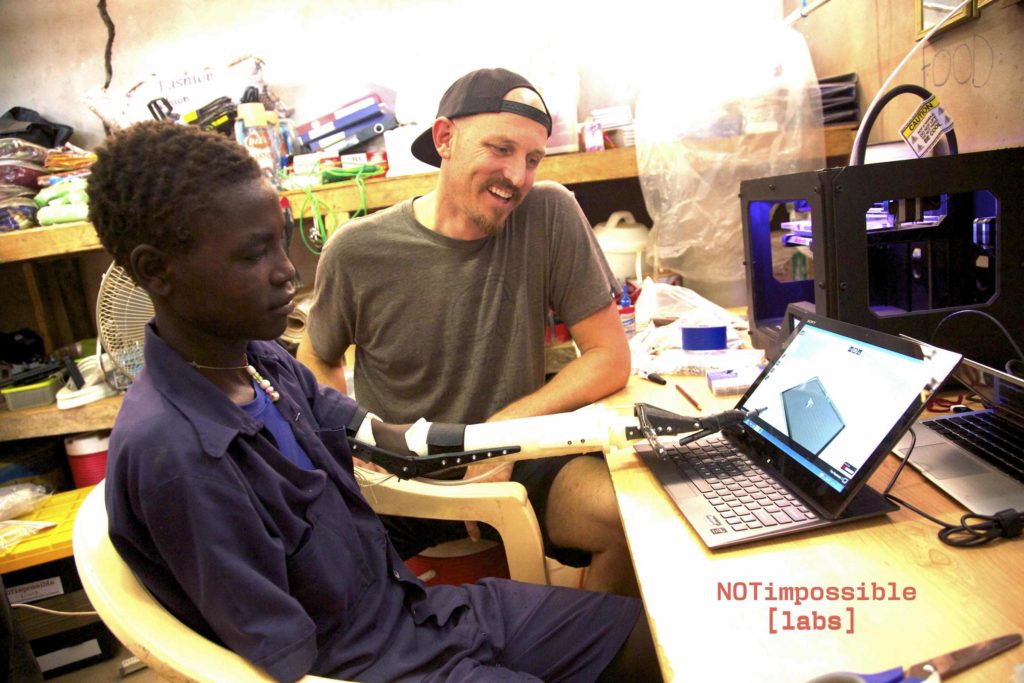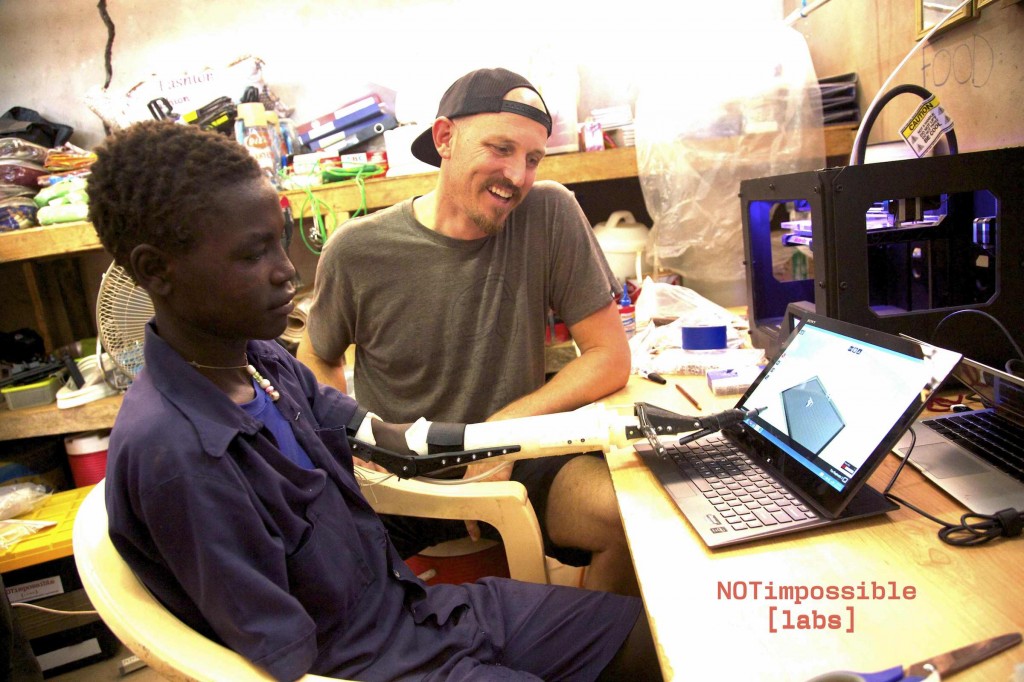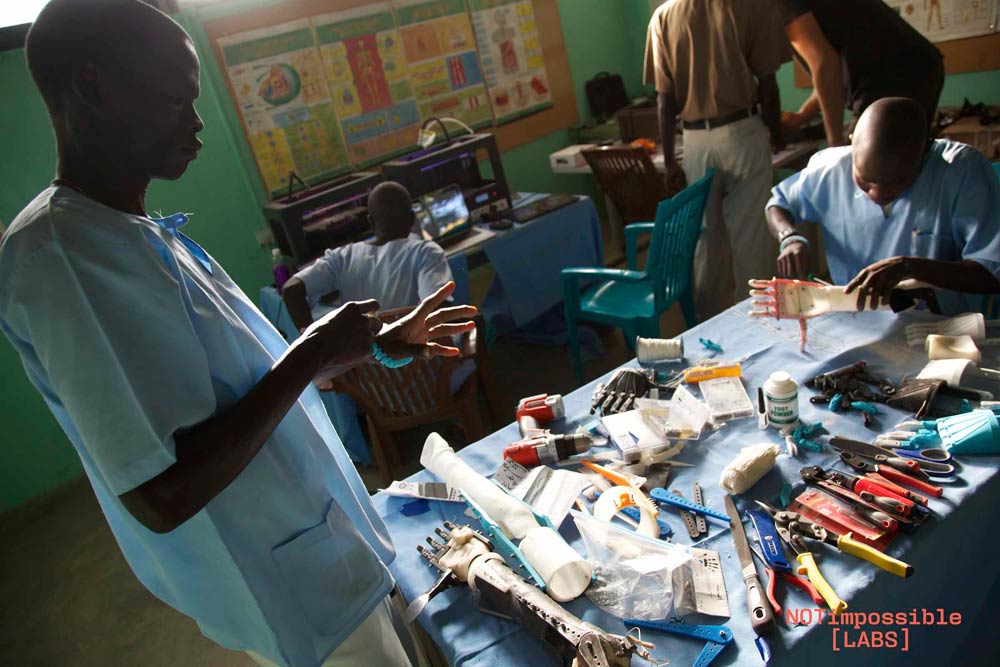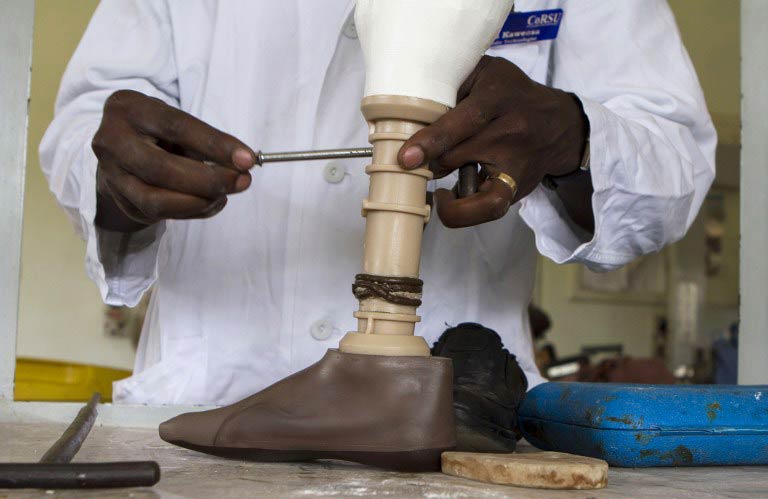
Doctors amputated Ugandan schoolboy Jesse Ayebazibwe’s right leg when he was hit by a truck while walking home from school three years ago.
Afterwards he was given crutches, but that was all, and so he hobbled about. “I liked playing like a normal kid before the accident,” the nine-year-old said.
Now an infrared scanner, a laptop and a pair of 3D printers are changing everything for Jesse and others like him, offering him the chance of a near-normal life.
“The process is quite short, that’s the beauty of the 3D printers,” said Moses Kaweesa, an orthopaedic technologist at Comprehensive Rehabilitation Services (CoRSU) in Uganda which, together with Canada’s University of Toronto and the charity Christian Blind Mission, is making the prostheses.
“Jesse was here yesterday, today he’s being fitted,” said Kaweesa, 34.
In the past, the all-important plaster cast sockets that connect prosthetic limbs to a person’s hip took about a week to make, and were often so uncomfortable people ended up not wearing them.
Plastic printed ones can be made in a day and are a closer, more comfortable fit.
The scanner, laptop and printer cost around $12 000, with the materials costing just $3.
Ayebazibwe got his first, old-style prosthesis last year but is now part of a trial that could lead to the 3D technology changing lives across the country.
Life-changing technology
The technology is only available to a few, however, and treatment for disability in Uganda in general remains woeful.
“There’s no support from the government for disabled people,” said Kaweesa. “We have a disability department and a minister for disabled people, but they don’t do anything.”
There are just 12 trained prosthetic technicians for over 250 000 children who have lost limbs, often due to fires or congenital diseases.
The 3D technology is portable and allows technicians to work on multiple patients at a time, increasing the reach of their life-changing intervention.
“You can travel with your laptop and scanner,” said Kaweesa, adding that the technology could be of great use in northern Uganda, a part of the country where many people lost limbs during decades of war between the government and Lord’s Resistance Army rebels, who specialised in chopping off limbs.
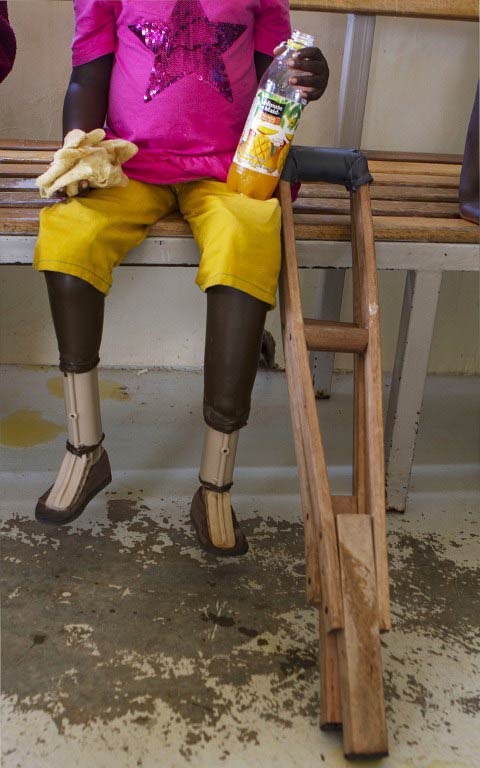
After receiving his first 3D socket Ayebazibwe was overjoyed. “I felt good, like my normal leg,” he said. “I can do anything now – run and play football.”
The boy’s 53-year old grandmother, Florence Akoth, looks after him, even carrying him the two kilometres to school after his leg was crushed and his life shattered. She too is thrilled.
“Now he’s liked at school, plays, does work, collects firewood and water,” said Akoth, who struggles to make ends meet as a poorly-paid domestic worker caring for five children.
Sitting on a bench outside the CoRSU fitting room were three young children and their parents.
“This is her first time walking on two legs,” said Kaweesa, pointing at a timid young girl who lost both her legs in a fire.
“Because they’ve seen other kids walking, playing, they realise they’ve been missing that,” he said “Once you fit them they start walking and even running.”

